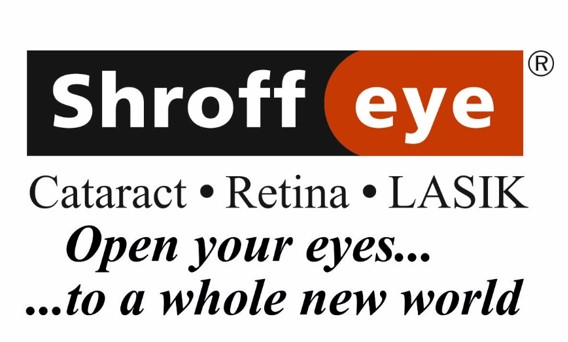Shroff Eye Hospital is India's First Eye Hospital accredited by the Joint Commission International (USA) since 2006. Shroff Eye is also India's first and only Wavelight Concerto 500 Hz LASIK center. Shroff Eye has stood for excellence in eye care since 1919. A firm commitment to quality is at the heart of all services provided at our centers at Bandra(W) and Marine Drive, Mumbai.
Dry eye syndrome, Dry eye syndrome causes, cure and treatment in Mumbai.
Dry Eye is a collection of symptoms that make up an eye condition that stems from an imbalance in the quantity or quality of tears bathing the eye. These symptoms include dry, red, gritty, and even watery eyes. Often, Dry Eye sufferers report the feeling of something foreign within the eye or eye-strain. Some people do not produce enough tears to keep the eye comfortable.
The balance of tear production and tear loss [through drainage and evaporation] maintains the moisture level in the eyes. When this balance is not sustained, dry spots appear on the surface of the eye and cause irritation.
A healthy eye constantly produces tears that lubricate. Excessive tears occur when a foreign body irritates the eye or when a person cries.
What are the symptoms of dry eye?
- Stinging or burning eyes
- Scratchiness
- Stringy mucus in or around the eyes
- Eye irritation from smoke or wind
- Excess tearing
- Difficulty wearing contact lenses
When the eye is irritated, the lacrimal gland produces a large volume of tears which overwhelms the tear drainage system. These excess tears then overflow from your eye.
What causes dry eye syndrome?
The normal aging of tear glands, as well as specific diseases and disorders, may cause changes in the amount and condition of tears produced.
Decreased sensitivity of the cornea can also lead to insufficient production of tears. Some types of contact lens wear can bring on this lack of sensitivity.
Excessive evaporation of tears can also cause dry eye syndrome. Such evaporation may be caused by meibomitis, which results from infection and inflammation of the meibomian glands in the eyelids. People with unusually large eyes, as well as those who suffer from thyroid disease, may also experience dry eye syndrome caused by excessive evaporation.
Dry eye can also result from unusual facial anatomy or irregularities in the cornea, resulting in uneven or inadequate tear coverage of the eye. Some patients suffer from dry eye as a result of medications such as antibiotics, antihistamines, diuretics, and anti-diarrheals, which can dry up the mucous membranes. Hormonal changes can also affect secretions from the tear glands. Since these medications are often necessary, the dry eye condition may have to be tolerated or treated with “artificial tears.”
People with dry eye are often more prone to the toxic side effects of eye medications, including artificial tears. Special preservative-free artificial tears may be required.
What is the tear film?
Tears bathe and lubricate the eyes. Each time you blink, a new tear layer forms over the front surface of your eye.
How is dry eye diagnosed?
We are able to diagnose dry eye by examining the eyes. Sometimes tests that measure tear production may be necessary. One test, called the Schirmer tear test, involves placing filter-paper strips under the lower eyelids to measure the rate of tear production under various conditions. Another uses a diagnostic dye (fluorescein or Rose Bengal) to look for certain staining patterns.
How are dry eyes treated?
Depending on the causes, Dry Eye Syndrome can be treated as a temporary problem or a lifelong disease requiring long-term treatment. Either way, tears must be conserved or replaced in order to provide relief.
Adding tears –
Artificial tears are probably the most common forms of treatment for Dry Eye Syndrome. These Eye drops are similar to your own tears. They lubricate the eyes and help maintain moisture. Preservative-free eye drops are available if you are sensitive to the preservatives in artificial tears.
Conserving the tears with Punctal Occlusion –
In cases of persistent Dry Eye symptoms, permanent, reversible closure of the tear duct or punctal occlusion may be the best solution. Punctal occlusion allows you to retain your own, natural tears without the bother or expense of constantly replacing the tear film with artificial tears.
Tears drain out of the eye through a small channel into the nose. We may close these channels either temporarily or permanently. The closure conserves your own tears and makes artificial tears last longer.
Other Treatments –
A person with dry eye should avoid anything that may cause dryness, such as an overly warm room, hair dryers, wind or a direct fan / air conditioner draft. Smoking is especially bothersome.
Some people with dry eye complain of “scratchy eyes” when they wake up. Using an artificial tear ointment at bedtime can treat this symptom.
What are the warning signs and how is it detected?
Early signs of dry eye are:
An occasional burning sensation in the eyes when in areas of low humidity or high pollution.
A gritty sensation in the eyes, which is persistent and painful.
Decreased tolerance of contact lenses.
In extreme cases of dry eye, patients may become unusually sensitive to light, experience severe eye pain, or notice diminished vision.
If early signs persist, make an appointment with us. We need to check for corneal abrasion or infection and begin treatment. Have annual eye exams.






